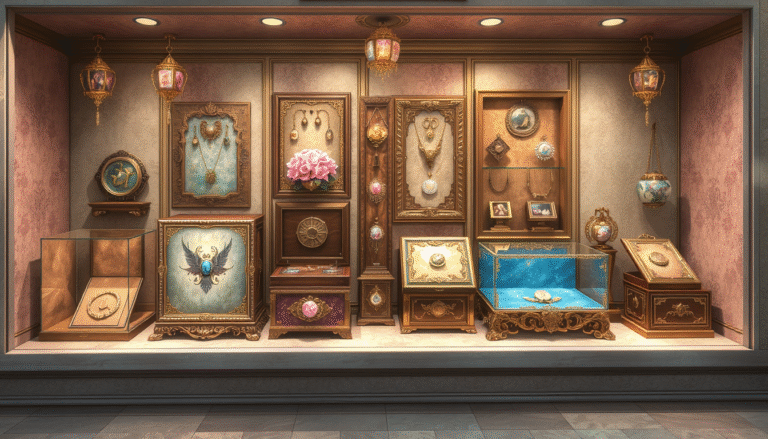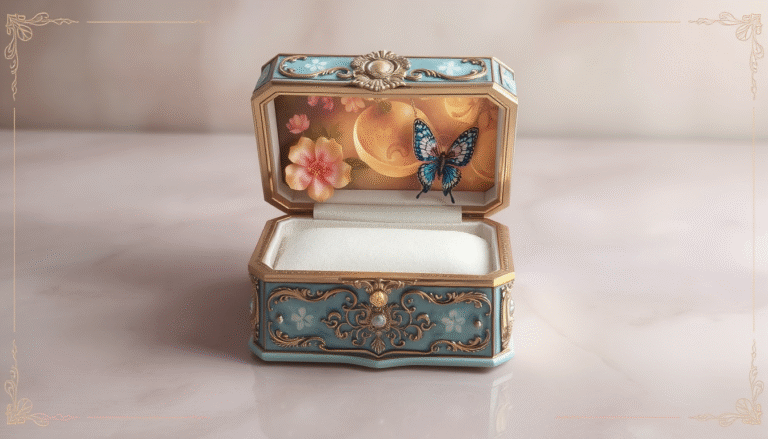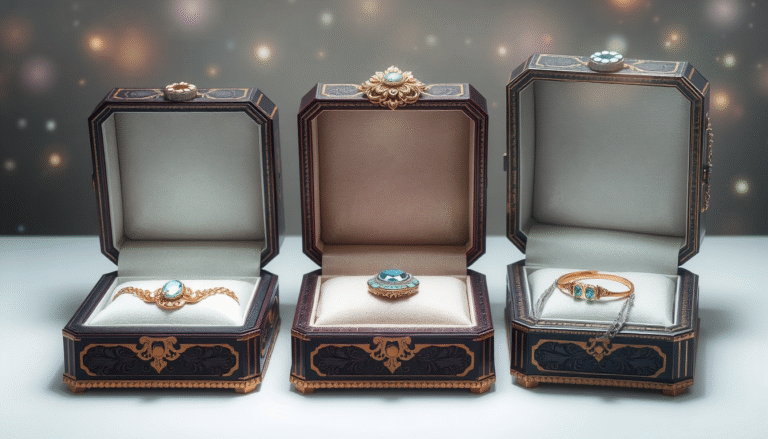Your jewels represent your biography. It puts important moments, relationships and personal victories on a memorable stage. Every piece has value beyond its price tag, whether it’s an old family heirloom or something you just bought.
These treasure-worthy items deserve more than a simple box.
A designer jewelry box is that special place where protection, beauty and organization meet! It’s one to invest in, something that houses your treasures and looks good in your home.
In our guide, shapes up what exactly makes a box fit for designer purposes. We’ll help you decide which one is right for your jewelry, show you examples in different materials, and tell you how to spot quality that will last.
What Elevates a Standard Jewelry Box to “Designer” Status?
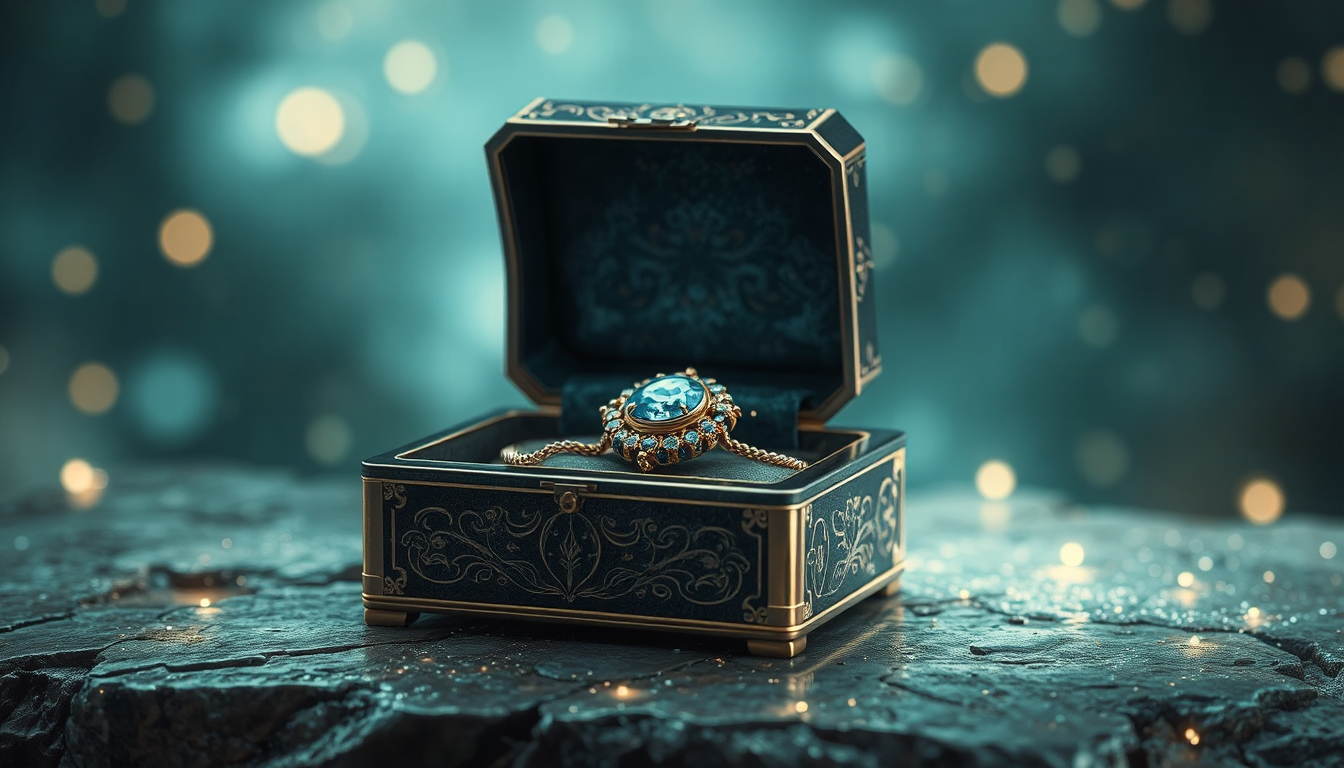
“Designer” is more than a nice brand name. It demonstrates an adherence to the highest standards in four critical aspects that distinguish a luxury item from a regular storage box. Black Jewelry Boxes: An Excellent Case for Women If we say a designer jewelry box, what should we look out for?
All of these pieces working together produce something useful, as well as beautiful.
-
Superior Materials
This is where quality begins. The best boxes are made of solid hardwoods such as walnut or burl wood; butter-soft, full-grain leathers that age with grace; and mirror-perfect high-gloss finishes. The hardware, too, is top-of-the-line — solid brass and stainless steel, not flimsy metal. -
Intentional Design & Aesthetics
A designer box is decorative. How it looks is just as important as how it functions, and the camera was designed to complement varying home styles, from modern and sleek to classic and ornate. -
Expert Craftsmanship
Here’s where skill comes into play. Think perfect joints, close-fitting compartments and hardware that runs smoothly and quietly. It should be smooth to touch, with no imperfections. -
Advanced Protective Features
A proper designer jewelry box should have more inside than a pretty face. It has technology that preserves your jewelry, such as special anti-tarnish linings for silver and other metals, and thoughtful compartments that prevent scratches and tangles.
How to Select the Perfect Designer Jewelry Box: A Practical Checklist
YES Finding the perfect jewelry designer box is very personal. Plus, you must align those features with what your collection needs and how you live.
Let’s go over a few of the options to locate the perfect home for your jewelry.
-
Assess Your Collection’s Needs
Inventory: Begin by taking a careful assessment of what you have. What Jewelry Do You Have? The types of jewelry that you have will dictate what kind of storage you’ll need.
What do you have most of? If your collection includes dozens of rings and earrings, you’ll require different storage than if you have a lot of necklaces or watches. You’ll want ring rolls, divided sections for earrings and deeper compartments for bracelets. For fine chains, you will need necklace hooks, or to find extra-long drawers that prevent tangling.
How big is your collection? Be realistic about how much space you need currently, and also consider future growth. Being able to buy an ever-so-slightly larger box, or a box you could add on to later, is smart.
-
Consider Your Daily Routine and Lifestyle
What you do will dictate what you’ll need. How you wear your jewelry is significant.
Do you value easy, daily access over long-term security? If you pluck jewelry from your dresser every day, you’ll want a box with a lift top and slot for your wedding ring, and an easy-to-reach tray below offers tidy organization. For items you use less regularly, like heirlooms, a larger box or one with a good lock will provide better security.
Do you travel a lot? A beautiful jewelry box at home is nice, but you will likely also want a compact travel case. This prevents leave-behind pieces from falling out without destroying your main storage setup.
-
Evaluate the Protective Features
The primary function of a jewelry box is to keep your jewels safe. Don’t cut corners here.
The Lining is Crucial. Basic felt or velvet is okay, but special anti-tarnish fabric is better. These materials are treated to absorb gases that make silver and other metals discolor. According to reviews from The New York Times’ Wirecutter, experts always stress the importance of high-quality, soft linings to prevent scratches and damage over time.
Compartment Design. Consider whether fixed or adjustable compartments best jibe with the way you work. Fixed compartments provide classic experience. Adjustable systems), because you can swap out trays as your collection grows (likely the most excited you’ll ever be to change your phone case in your life).
-
Match with Your Personal & Home Aesthetic
You’re going to have this box in your personal space for years. It should bring you joy whenever you see it.
A designer jewelry box should coordinate with your home’s design. So sleek! Smart home purveyor Best Buy suggests these adorably simple and a chic glossy black or white box looks great in a mod bedroom. A traditional room is a great setting for the warmth of a classic box of walnut or cherry wood. For punchy or chic rooms, think about unusual materials such as shagreen or polished brass.
An Expert’s Guide to Materials and Craftsmanship
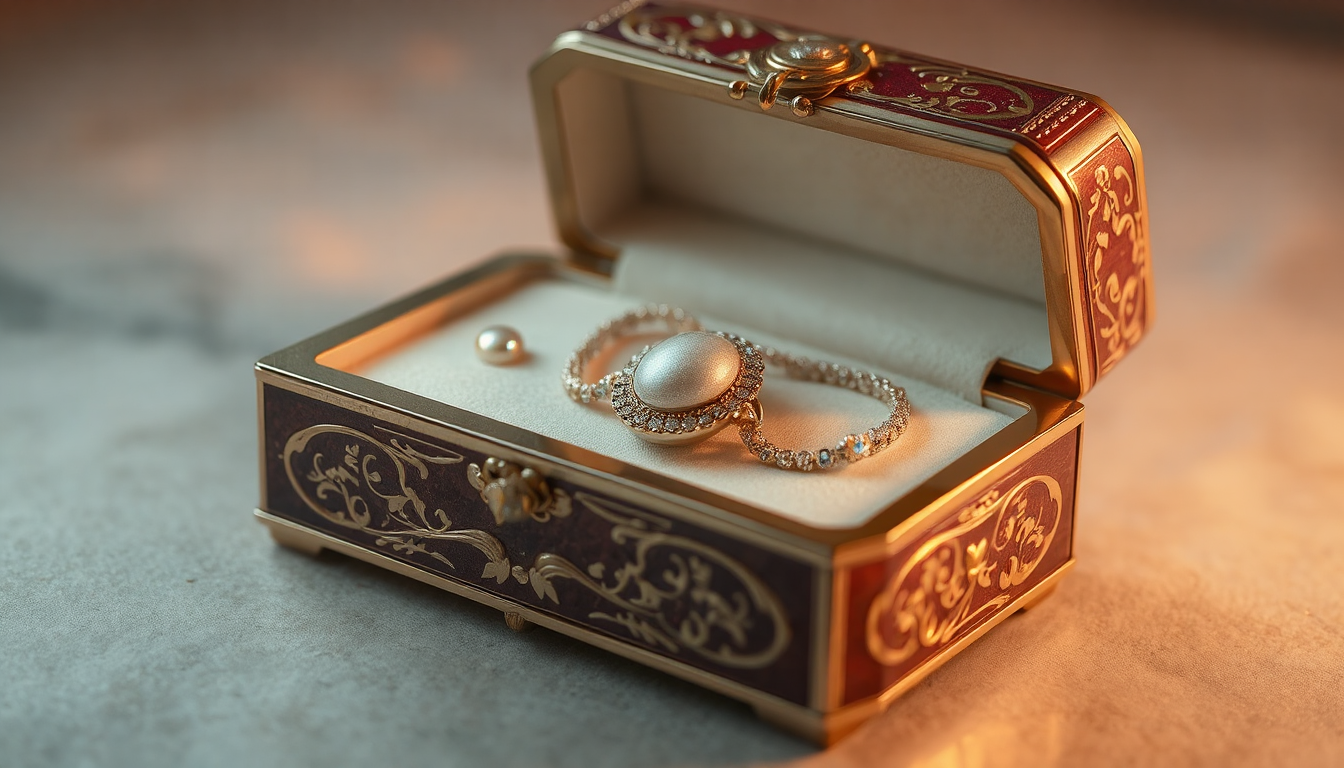
To truly understand a designer jewelry box, you need to know quality beyond appearance. Its materials and craftsmanship notes remind you that it is what it is — and that it will be for a long time. That’s what justifies the price.
When inspecting a high-quality wooden box, it should feel substantial, be smoothly finished with no rough edges, and have any hinges or fasteners that open quietly and easily. A shoddy box will have hardware that feels lightweight and cheap as it slaps against the frame. Trust me how it holds in the your hands, a quality feel solid and well made.
A Comparative Look at Designer Materials
Here’s a comparison of materials commonly used in high-end jewelry boxes.
| Material | Pros | Cons | Best For… |
| Hardwoods (e.g., Walnut, Maple) | Durability, Timeless Beauty, Heirloom Quality | Heavier, Higher Cost | Long-term, stationary storage |
| Leather (Full-Grain) | Luxurious Feel, Excellent for Travel, Ages Well | Requires Conditioning, Susceptible to Scratches | Frequent travelers, classic style |
| High-Gloss Lacquer | Modern Aesthetic, Wide Color Range, Easy to Clean | Can Show Fingerprints, Prone to Chipping | A statement piece on a vanity |
| Shagreen/Faux Shagreen | Unique Texture, Very Durable, Art Deco Style | Very High Cost, Specific Aesthetic | A unique, decorative luxury item |
The Unseen Details
The fact that it IS an expertly made designer jewelry box is often easy to overlook.
Hardware: Make note of the hinges, locks and handles. Are they brass or stainless steel? They are more durable and less likely to tarnish than just-plated metal, which can chip and tarnish. The stroke should be easy and firm.
Lining Technology: This is important to stop them from being preserved. The top brands also have developed some unique technologies. WOLF, for instance, owns the patent for its LusterLoc™ fabric, which is engineered to absorb the hostile gases that lead to tarnishing for as many as 35 years. This amount of scientific detail demonstrates that this brand cares about protection that really works, not protection that merely looks the part.
Spotlight on Iconic Approaches to Designer Jewelry Storage
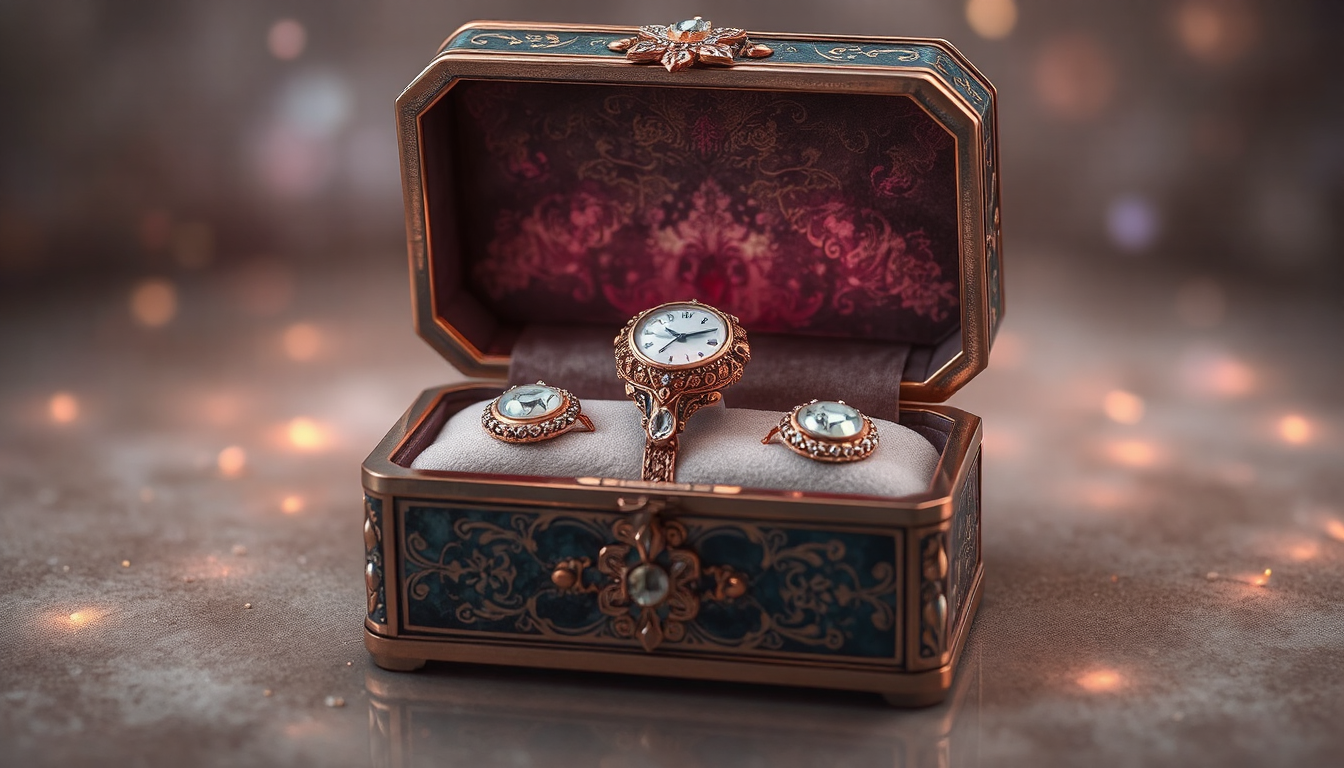
Living in designer jewelry storage land there are so many styles to choose from. Different brands tackle the test in different ways, catering to distinct tastes and needs. Instead of going all “best,” we’re considering these unique approaches so you can find what’s best for you.
The Heritage Traditionalists (e.g., WOLF, Agresti)
-
These are heritage brands, with decades, even centuries, to build on. They specialize in classical materials and techniques — fine woods, intricate marquetry and soft leather.
-
They often have well-ordered interiors with a place for everything, like the designs of the Italian maker Agresti, and demonstrate a classic notion about luxury and order. WOLF designs are built to last a lifetime; Its rich history with fine timepieces and luxury design has made a WOLF a leader in the industry; WOLF has proven to stand the test of time.
The Modern Minimalists (e.g., Pottery Barn, West Elm)
-
These are the brands that do minimal, modern-friendly aesthetics—and practical function—best. Their designs are truly modern and made to fit any modern home.
-
You’ll find smooth lines in neutral tones, along with materials like shiny lacquer and light woods, typically paired with minimal metal hardware.
The Fashion-Forward & Bold (e.g., Jonathan Adler, Aerin)
-
For these designers, the box is something to be decorative — functional art, in other words.
-
There will also be unexpected elements: bold colors, glamorous touches, unique materials. Jonathan Adler specializes in pop-art designs and shiny finishes; Aerin frequently features luxurious shagreen and polished brass for a more sophisticated, feminine look.
The Innovative & Modular (e.g., Stackers)
-
This process is one that prioritizes customisation and flexibility. It understands that jewelry collections expand and evolve.
-
Stackers lets users build their own designer jewelry box by choosing individual trays for specific needs—one for rings, one for necklaces, another for watches. As noted by jewelry experts featured in Vogue, organizing storage for your specific collection is key to preservation, and modular systems offer the ultimate flexibility.
The Final Polish: Preserving Your Heirlooms and Your Investment
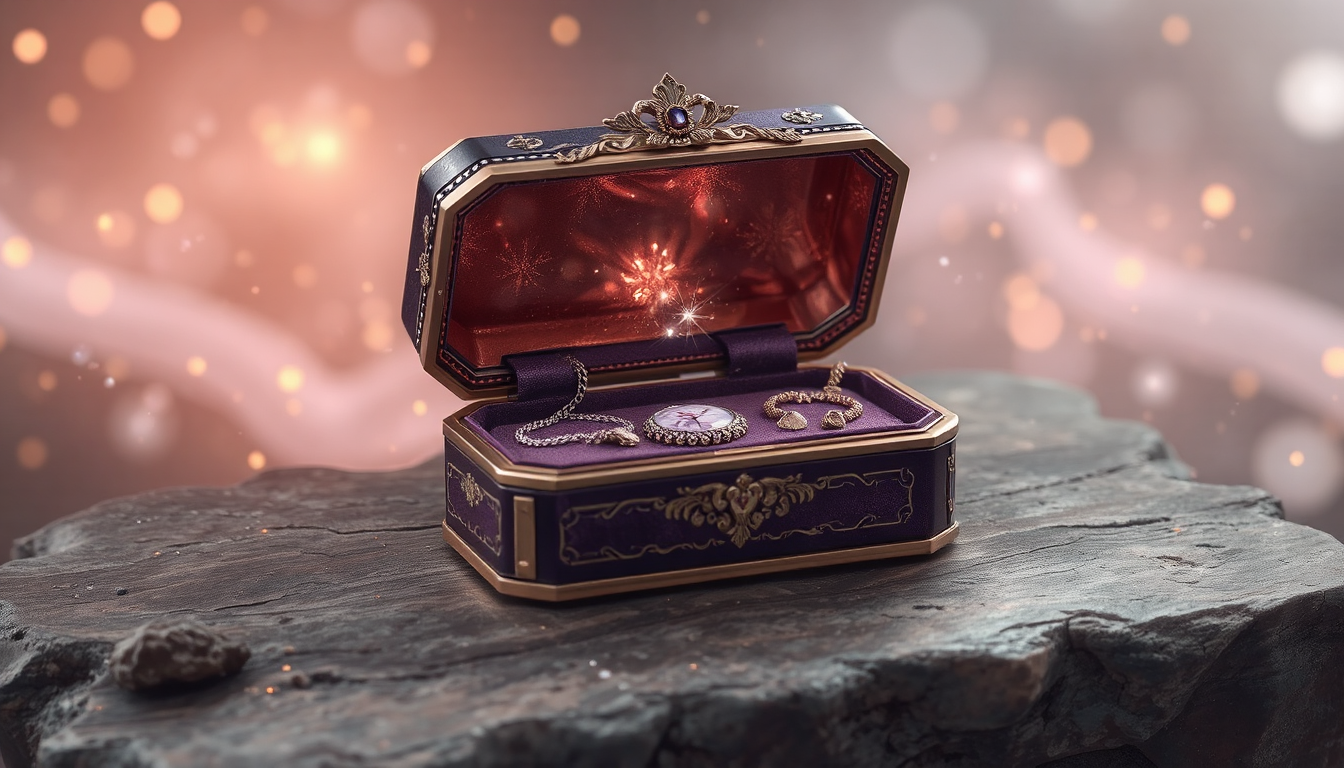
A design jewelry box is an investment in preservation, and with proper care it will last a lifetime to store your treasures. The care required to maintain it is not complex but it is important.
For the Box:
-
Wood: Dust with a soft, dry microfiber cloth twice a month. Avoid chemical polishes, as these can cause discoloration over time.
-
Leather: Rub the outside of your bag down once or twice a year with leather cream to keep it from drying out and keep it soft.
-
Lacquer: To avoid fine scratches, wipe fingerprints and dust with a clean, soft, damp microfiber cloth.
For the Jewelry Inside:
-
Always ensure your jewelry is clean and dry completely before returning to the box to avoid dampness.
-
Clasp all of your bracelets and necklaces before putting them in storage.
-
On occasion, open the box for several hours inside a dry, well-ventilated space to air it out to maintain the inside in good condition.
Conclusion: Choosing with Confidence
A designer jewelry box is so much more than a simple storage space. It houses your prized heirlooms, finds your essentials and adds personality that compliments your own.
The right selection marries your organization requirements, your aesthetic preferences, and durability.
Now you can make an informed decision with that information. Consider this not a cost but investment and protection for your most treasured jewelry.
FAQ
-
What makes a jewelry box qualify as “designer”?
A designer jewelry box is constructed of the finest materials (such as hardwoods or full grain leather), carefully planned aesthetics, much more skilled craftsmanship with every joint perfectly aligned and every bit of hardware functioning smoothly, and superior protection (anti-tarnish linings, for example). -
How should I choose the right designer jewelry box for my collection?
Evaluate the size and type of your collection, your daily routine, the protective features (and most notably the lining) your box needs, and perhaps choose a style that complements your home’s décor, and you should also have a well-designed storage solution that will serve you well for a long time to come. -
What materials are best for high-quality designer jewelry boxes?
Hardwoods such as walnut or maple provide durability and classic good looks, full grain leather provides luxury and patinas beautifully, high-gloss lacquer provides a contemporary look and shagreen adds texture for decorative luxury. -
How do different brands approach designer jewelry storage?
Heritage traditionalists (WOLF, Agresti) specialise in timeless handiwork, modern minimalists (Pottery Barn) provide clean-lines, fashion-forward brands (Jonathan Adler) offer pieces that add delight and so on, for design (Stackers) to mix and match. -
How should I maintain my designer jewelry box?
Dust wood boxes with a soft cloth, condition leather boxes 1-2 times a year, wipe lacquer boxes to prevent scratches, make sure your jewelry is clean and dry before you put it away, secure latches to avoid tangles, and choose a dry place to air out your box when necessary.

